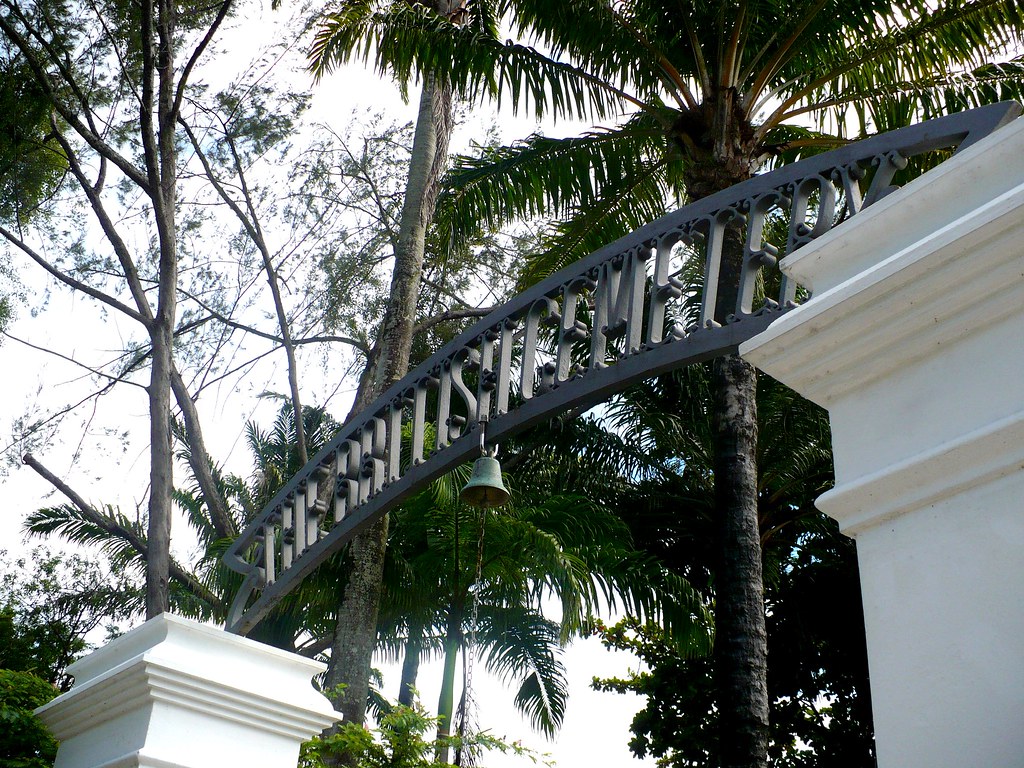Reopened in February of last year, the British Cemetery on Ladeira da Barra has become an open-air museum with an ample view of the bay. Just ring the bell.
By Tatiana Mendonça
Translated by H. Sabrina Gledhill
The expression goes “for the English to see.”* In this case, their dead have one of the best views of the bay. The fact that they can’t enjoy it is a mere detail. But anyone can share the peace and quiet that reigns supreme in the British Cemetery on Ladeira da Barra, with the added advantage of having eyes to see. All they have to do is ring the bell at the gate.
But it hasn’t always been this way. There was a time when the jungle had taken over this place and thieves jumped over the fragile wall to hide their loot. It was back then, in 2004, that Sabrina Gledhill, a British researcher, came across the cemetery. She was working in the chapel with children from the Ibeji NGO. The social project is no more, but her interest in this place persisted.
Sabrina took part in the development of a revitalization project that gained the support of FazCultura (the state tax incentive program for cultural projects) and the Clemente Mariani Foundation. And then there was light. In February of last year, the cemetery founded in 1811 was reopened in the presence of the British Ambassador in Brazil, Peter Collecott. The first stage of the project should be completed this year, but there is still a great deal of work to be done. Some tombstones are still in pieces, but visitors can already turn this spot into a sort of open-air museum. “Brazilians and Britons see cemeteries very differently. Here people think they are macabre. But for the British, they are places of peace, serenity and remembrance.”
The British Cemetery was created because, being Protestant, the Britons who arrived in Bahia could not be (and did not want to be) buried in churches, as was the custom among Catholics at the time.
DOCTORS AND SLAVE TRADERS
The cemetery is located in one of the finest parts of the city and is the resting place of some 500 people. “It is hard to say exactly how many, because many of the tombstones have disappeared,” says Sabrina. The records show that two sailors from the Beagle, which brought Darwin to Bahia, were buried there, but the researcher has not been able to find the spot. Nor has she found the grave of the Japanese sailor who committed seppuku aboard a British ship.
One of the tombs that is still in its original place is that of John Ligertwood Paterson, MD. A pioneer in the fight against cholera and yellow fever, he helped found the Isolation Hospital, now Couto Maia Hospital. He made a point of tending to the poor and enslaved. When he died, the people carried his coffin to the cemetery on their shoulders.
The first person buried in this place was John Sharp, a slave trader who died in 1813. His tomb lies in the shadow of a tree, the stone covered in moss.
But it isn’t just Britons who are buried here. A Bahian woman, Maria Constância Ogilvie, the wife of a British merchant, is also there. After she died, her husband returned to Europe to heal his sorrows. In the lower portion, there are Jews – British and of other nationalities – and many stones bear Hebrew inscriptions. Before the Israelite Cemetery was created, they went there to live life eternal.
The British Cemetery has not been deactivated, as many believe. Burials are still performed there – most recently that of Susan Wilkes, in 2007. Listed as a heritage site in the state of Bahia, the cemetery is maintained by the St. George’s Society, the NGO that represents the British community in this state. While the place was being restored, they had to ask the permission of the IBAMA (the environmental protection agency) to remove a tree that was growing between two tombs. Life and its cycles. One inscription reads “Life is Eternal.” In a way, it is true.
*(Translator’s note: A Brazilian expression meaning “whitewash” or “sham” – the author is using it literally in this case.)
Article published in Muito magazine by the A Tarde newspaper on 5th July 2009

